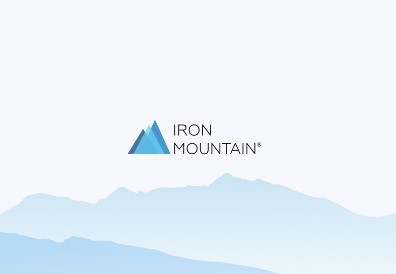Elevate the power of your work
Get a FREE consultation today!
At Iron Mountain, we've learned a thing or two about what it takes to get digitization right. Here are six key learnings from our small business experts to help you on your digital journey.

While the majority of small business leaders are aiming to transform their operations from paper to digital-76% of them to be exact-each company has unique challenges and goals for what this might look like. Hitting your digitization target requires a certain mindset focused on longevity, industry expectations, and return on investment.
We've been in the business of information management for over 70 years, so we've learned a thing or two about what it takes to get digitization right. Here are six key learnings shared by our small business experts to help you on your digital journey.
Your goal doesn't have to be 100% digitization. In fact, it probably shouldn't be. It's more important to make business-critical information as accessible as possible in a secure and cost-effective way. If you're doing that, you're doing it right.
Digitization usually triggers images of scanned paper turning into convenient little computer files with subsequent high-fives all around for the IT team. But in reality, scanning is just one of several aspects of digitization. Comprehensive information management reduces your exposure to data theft and regulatory compliance issues. It's important to consider storage, security, and defensible destruction of no longer needed information (what's inside those files and on your devices). Identifying what's needed and what isn't can aid in workflow automation and make your digitization efforts worth it in the long run.
Going completely paperless is a noble goal but one that is not easily achieved and, frankly, a bit overwhelming. A better approach is to accept that some things will be digital and some will remain paper-based, and then to seek out every opportunity for reducing the incidence of the latter. Ask yourself:
What does my business currently deal with in paper form that can be received digitally or easily converted to digital?
What processes can be altered to prevent paper from being unnecessarily generated?
What steps can be taken to change personal habits and get team members to use less paper?
To succeed in making information more accessible, you need to think beyond the physical and into digital file conversion. Storing documents in file cabinets seems easy and inexpensive at first: until it isn't. The same goes for offsite storage lockers. Or stacks of hard drives and thumb drives that hold digital data. These approaches work for the present, but they don't scale well or lend themselves to easy searches. Organizations with serious storage needs eventually find their way to third-party storage providers.
In today's world of collaborative, remote work, cloud-based storage is becoming vital. But be sure to balance your need for short-term, highly accessible (but relatively expensive) cloud storage with cost-effective long-term options, such as cloud-based tape storage. Cloud-based storage with optical character recognition (OCR) technology can make the contents of your documents (across many different file types) completely searchable by text or index.
Information is a prized commodity to cyber criminals, both for its intrinsic value (i.e., personal credit card details) and the ability to shut down operations by blocking access to data (i.e., ransomware). As part of your digitization efforts, here are some considerations for preventing breaches:
Encryption: Make your files unreadable-with keys you own and manage-both in storage and during transmission.
Role-based permissions: Ensure only authorized users have access to the information they need when they need it. Not every employee needs access to sensitive information.
Chain of custody: It's a legal term, but an important one. If you are in a regulated industry, you need to establish where your physical and digital assets are at all times.
Digitization is a big undertaking that ultimately should pay for itself on your business's bottom line. If you want your efforts and investments to pay off, here are some key ways to see a return:
Focus on reducing staff time spent on information searches
Reallocate workspaces that have been devoted to storage and reduce your overall office real estate needs and costs
Enhance business processes by freeing up information now trapped in paper documents
Digitization isn't a sprint. It can't be done overnight. But it can greatly improve your business's ability to adapt in a remote world, save time and money, and quickly boost growth. No matter where you are on the digital journey, keeping these six lessons in mind will ensure you are set up for success for many years to come.
Iron Mountain's Small Business Basecamp is your starting point for all things information management. Learn how to get started on your journey from paper to digital, why digitization is the key to efficiency, and more.
Get a FREE consultation today!